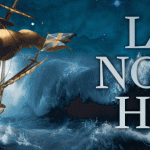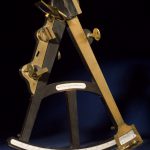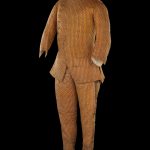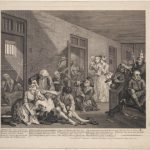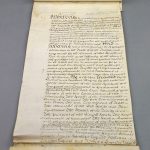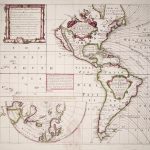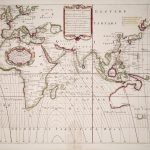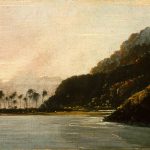Review: Ships, Clocks & Stars: The Quest for Longitude
Article DOI: https://dx.doi.org/10.15180/140204
Review of Ships, Clocks & Stars: The Quest for Longitude
https://dx.doi.org/10.15180/140204/001In a whirl of announcements and events designed to capture the imagination of the public, the Longitude Prize was launched in the summer of 2014. Between 22 May and 25 June, Britons were invited to vote for one of six shortlisted challenges to be the focus of a £10m prize fund. Speaking at the BBC’s Broadcasting House, Astronomer Royal Lord Martin Rees explained that zero-carbon flight, global malnourishment, antibiotic resistance, paralysis, clean water and dementia were six among ‘many broad societal problems demanding fresh thinking’.[1] Members of the new Longitude Committee encouraged the public to ‘surprise us!’ with innovative ideas; Professor Brian Cox stressed that ‘it’s open to everyone, not only scientists but [also] the inventor in their garden shed’.[2]
Alongside the excitement, the Prize perhaps inevitably aroused criticism, with commentators complaining that it was inappropriate and in bad taste for the ill-informed public to choose between six areas which all deserved investigation.[3] It was also noted that the scale of the technical challenges and the cost of modern scientific investigation made it unlikely that a ‘lone genius’ could scoop the prize; Cox’s broad grin as he said ‘I kind of hope an inventor in their garden shed wins it’ suggested he didn’t really believe it was possible.[4] But if John Harrison, an eccentric northern clockmaker, had apparently managed just that in the eighteenth century, perhaps the same could happen today. Still, online commentators predicted an Establishment stitch-up, as had supposedly happened for decades to Harrison despite his having found the solution that had eluded the great Isaac Newton.[5]
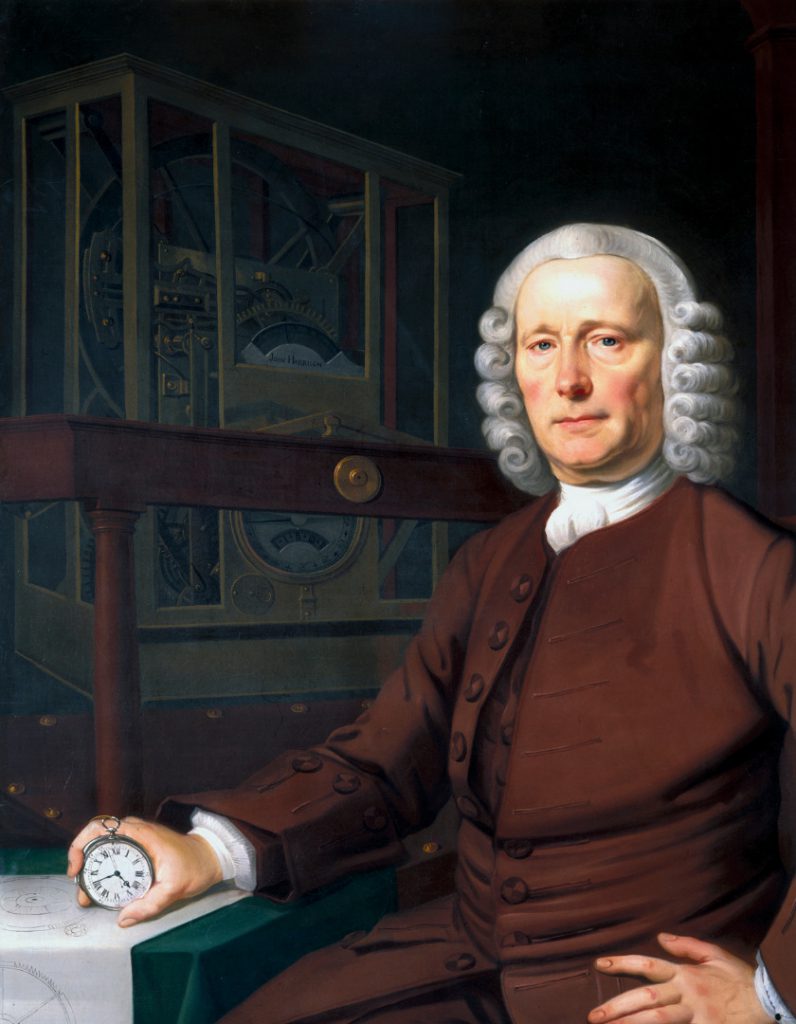
Although the real, and perhaps more realistic, purpose of the twenty-first-century Prize seems to be to enthuse the public about science, the invocation of John Harrison as an outsider capable of a telling contribution on a pressing issue, handsomely (if belatedly) rewarded for his achievements, has been at the centre of its public relations profile. Yet the debate around the 2014 Prize highlights both the differences between now and 300 years ago, and the complexities of an apparently simple history. These are brought out in the National Maritime Museum’s Ships, Clocks & Stars exhibition, as well as in the official publication of the same name.[6] Although the Museum has been willingly involved in the promotion of the new Longitude Prize, dedicating the exhibition’s final wall to the current challenges and providing historical blurb for the Prize’s PR, Ships, Clocks & Stars is determined to present a more nuanced account of why longitude was important and how the problem was solved.

It would be vastly over-simplifying this captivating and multi-layered exhibition to describe it as ‘myth-busting’, but it is undoubtedly true that it, and the five-year AHRC-funded research project behind it, sit in the shadow of Dava Sobel’s 1995 blockbuster Longitude: The True Story of a Lone Genius Who Solved the Greatest Scientific Problem of His Time. Sobel’s book cast John Harrison as a misunderstood hero battling against the odds and an establishment led by the nefarious Astronomer Royal Nevil Maskelyne; the project blog’s annotated bibliography acidly remarks that the ‘enormous popularity’ of this ‘succinct book for a popular audience…has given the Sobel account great currency’.[7] Of course the project and exhibition were never going to endorse the misconception that Harrison’s reliable chronometers were the only possible solution to the problem of finding longitude at sea. In fact, one of the results of the research project, which has digitised the archives of the Board of Longitude and other related papers,[8] has been to bring to light the great variety of solutions proposed and considered. The exhibition dedicates space to explaining their details and development. Five are presented as serious contenders: timekeepers; Jupiter’s moons; lunar distances; signalling; and magnetism. The first four had been described by Newton in a report to the Admiralty in 1714, a document which is held in the Cambridge Digital Library – it is a great strength of the official publication that its footnotes provide precise web addresses allowing readers to access the original documents directly.[9] Newton’s succinct summary mentions each of the methods alongside its then drawback: a watch could keep the time of a reference location, to compare with local time found astronomically, but such an instrument had not yet been made sufficiently accurate to withstand the vicissitudes of marine travel; a reference time could alternatively be provided via observation of the predictable eclipses of Jupiter’s moons, but such fine telescopic observation was currently impossible on a moving ship; or the Moon’s position against the background of stars could provide the reference time, but her motions were as yet insufficiently understood to provide positions accurate to better than two or three degrees of longitude; or vessels anchored at known locations could fire signals at set times, but deep oceanic waters made that unfeasible. The fifth method took advantage of changes in magnetic variation (the difference between true and magnetic north) across the globe, but such differences were small and changed with time.
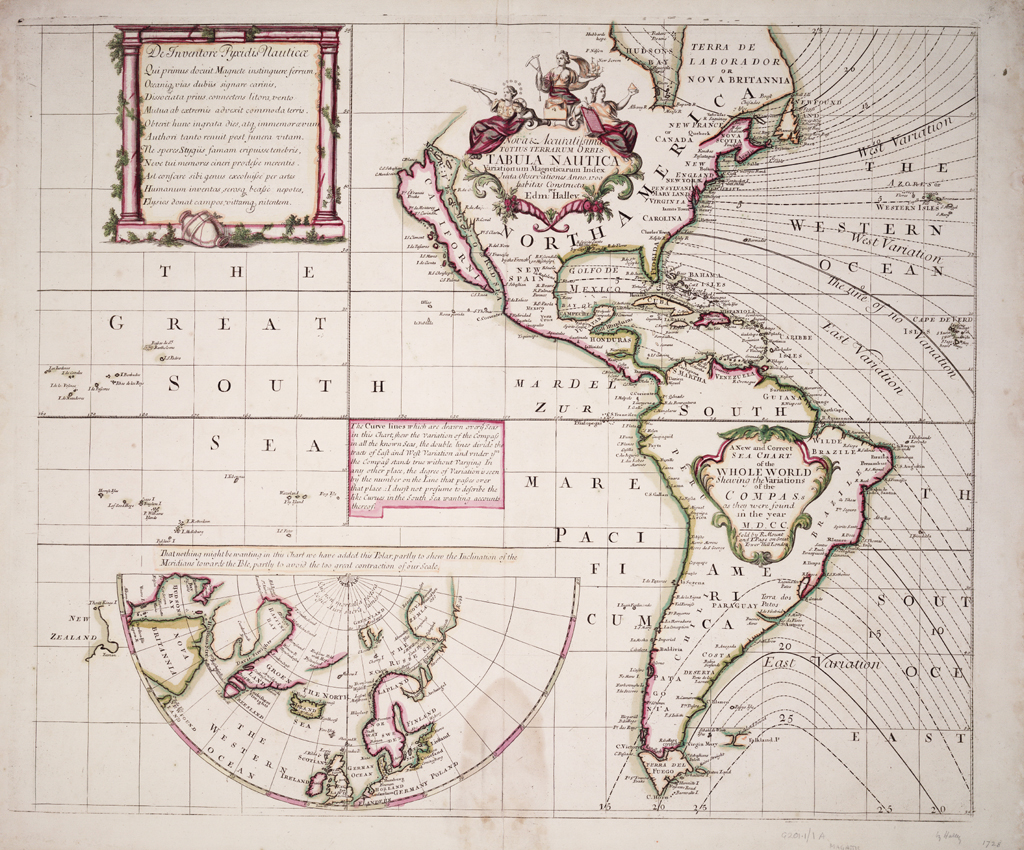
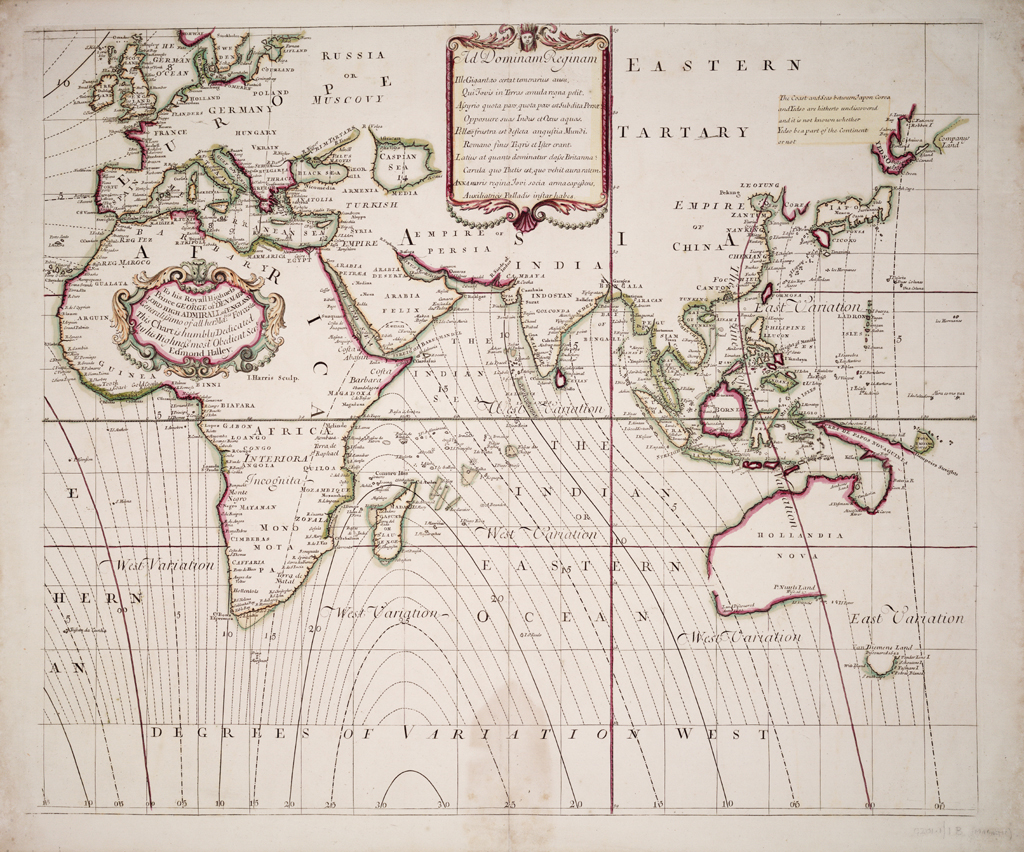
The exhibition presents each of these methods alongside their original proponents, explaining them succinctly before narrowing them down to the two eventual front runners: the timekeepers and the lunar-distance method. Importantly, though, as the methods are narrowed, the cast of characters is widened: we learn how Christiaan Huygens, the first advocate of a horological solution, was succeeded by Harrison and George Graham (whose financial support and advocacy in London was crucial for the Lincolnshire-based Harrison), while in the task of observing, cataloguing and computing the Moon’s motions John Flamsteed was joined by Maskelyne and the Hanoverian cartographer Tobias Mayer. Meanwhile accurate astronomy at sea was facilitated by better instruments, invented by John Hadley among others. Visitors to the exhibition have the valuable opportunity to handle a sextant and octant, but their use could perhaps have been explained more thoroughly; it could also have been made clearer that such instruments were necessary in both methods, since local time always needed to be found as accurately as possible. But Hadley’s octant and the sextants that later incorporated Hadley’s innovations were particularly useful for the precise measurements required in the lunar-distance method, and in any case it is hardly surprising that the NMM curators chose to place them on the right hand side of the gallery, where they help Mayer’s maps and Maskelyne’s tables to stand a chance of attracting attention away from Harrison’s shiny clocks.

It is rare for all five of Harrison’s timepieces to be brought together in a single exhibition, but this is just one of the achievements of the curators. The Longitude Act itself, given royal assent three hundred years and two days before this exhibition opened, is displayed to the public for the first time here.
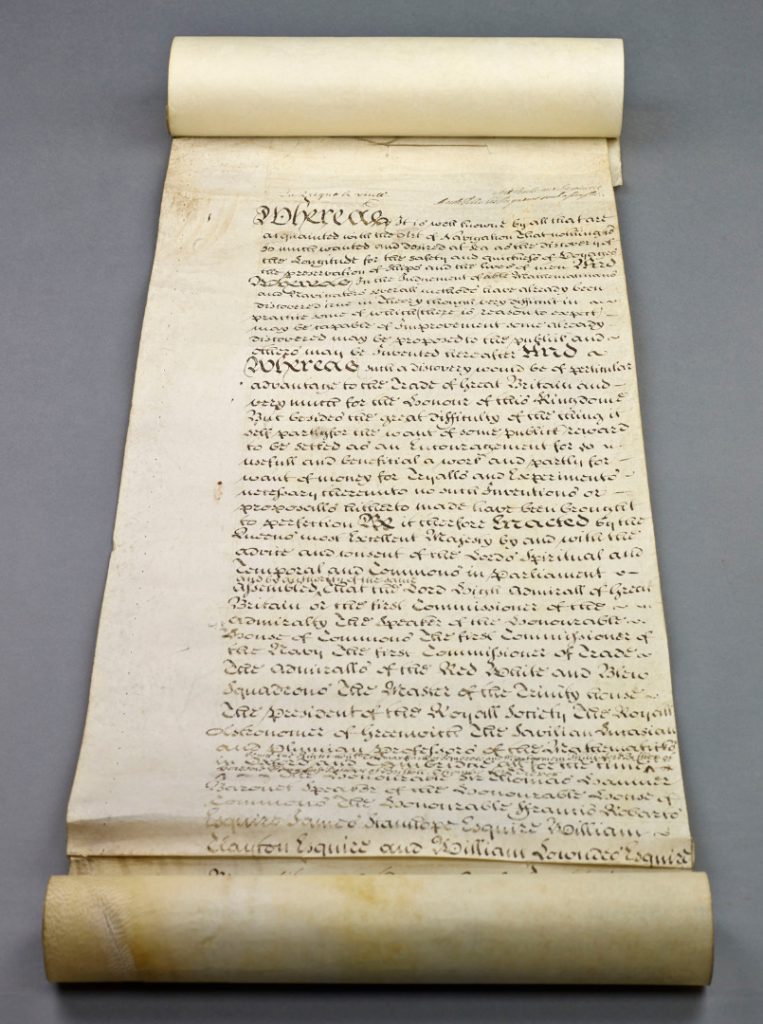
Its loan (from the Parliamentary Archives) is one of many from public and private collections in this country and abroad; fascinating draft treatises and astronomical notebooks full of scribbled calculations are set off by artwork painted and objects collected on Captain Cook’s expeditions, as well as Maskelyne’s wonderful observing suit, ‘padded in all the right places’ according to its exhibition label.
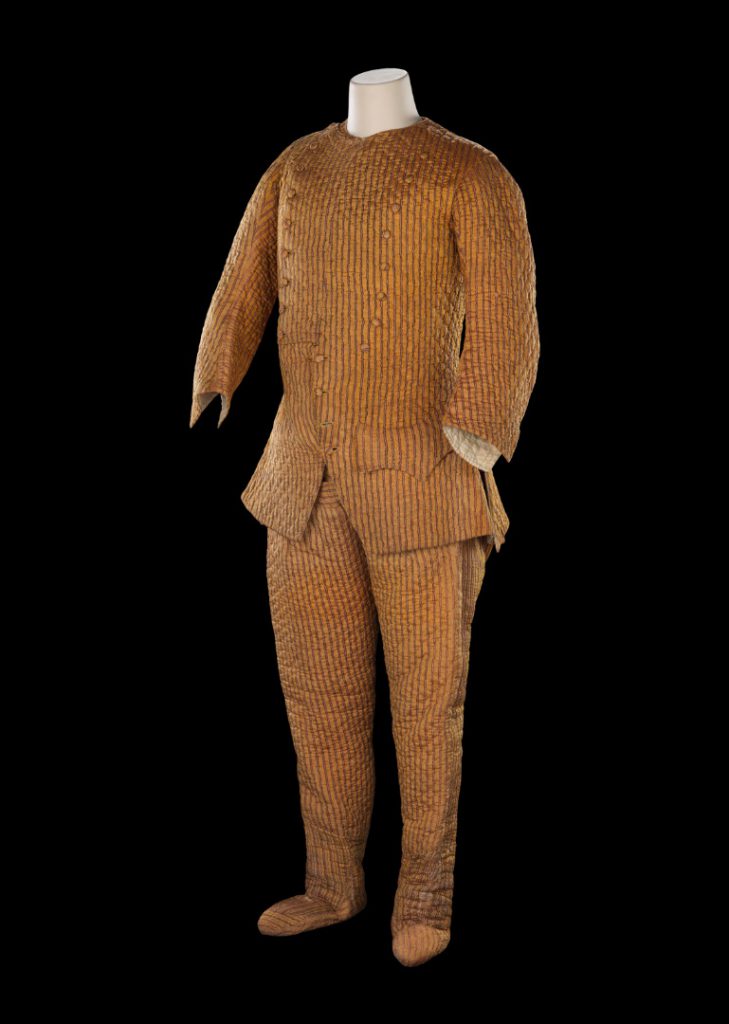
These objects are put to excellent use in describing the science as well as its cultural context, the impact of longitude on both exploration and life at home. I was lucky to be shown around by Katy Barrett, Royal Museums Greenwich’s Curator of Art pre-1800, and her tour highlighted how longitude captured the public imagination to an extent beyond the dreams of the 2014 Longitude Prize’s public relations team (despite the modern media at their disposal). One room in the exhibition is dedicated to the coffee-house culture in which the longitude problem and the array of practicable and preposterous proposals were discussed. The plastazote ‘coffee’ is not very convincing, but the sound of re-enacted discussions and the room’s decoration incorporating contemporary cartoons effectively re-creates the atmosphere of excitement around the problem. Visitors can readily understand how the crackpot schemes satirised in Hogarth’s A Rake’s Progress (displayed here in authentic and pirated versions) came about.
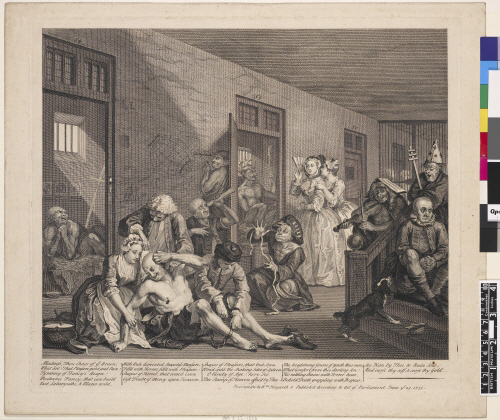
Of course it was the Board of Longitude’s task to sort the crackpot from the credible. Despite being named in the original Act, the Commissioners came together for the first time only in 1737, and would not be called a Board until the 1760s. But from then on they met with increasing regularity and bureaucratisation, initially to discuss possible solutions and later, after Harrison’s designs were successfully copied and economised and after astronomical work had brought about the Nautical Almanac that greatly simplified the computation of lunar distances, to support methodological refinements and improvements in the production and maintenance of instruments. In this exhibition the Board’s work is conveyed through the re-enactment of a 1765 meeting discussing the results of tests carried out on transatlantic voyages over the previous two years. One might complain that it is unclear how much of the entertaining recording was scripted according to the Board’s minutes and how much from the curators’ imagination; the minutes are in fact quite detailed, but it is hard to know how dispassionately the commissioners were able to discuss the lunar-distance method given that its principal advocate Nevil Maskelyne was now one of their number.[10] (One wonders, too, to what extent they were swayed by the intellectual appeal of an astronomical solution over the artisan technicality of timekeepers.) Nevertheless, the combination of broadcast discussion with projected images of the projects and information about the speakers is highly effective.
Of course, even once the Board had agreed that both the chronometric and lunar-distance methods had been proved workable, the considerable task of development still lay ahead. Much of the exhibition (and more than half of the accompanying publication) is dedicated to this development process, in which the ‘public/private partnership’ Lord Rees evokes in his foreword to the publication was paramount. On the astronomical side, the exhibition explores the work of the cottage industry that evolved to produce the Nautical Almanac, with teams of observers and human computers notably including some women. This teamwork was counterbalanced by exploration of the potential for mechanisation in the production of instruments and computation of tables, embodied in the exhibition by Jesse Ramsden’s dividing engine, which marked out fractions of degrees on a circle with unprecedented accuracy, and by the difference engine and logarithmic tables of Charles Babbage. In the latter, Babbage experimented with every conceivable colour of ink and paper to find the ideal combination to minimise misreading; he even tried black on black, evidence either of extreme thoroughness or of longitude’s capacity to bring out the crackpot. On the chronometric side, we see the reproduction and simplification of Harrison’s designs by watchmakers such as Thomas Mudge, John Arnold and Thomas Earnshaw. Arnold’s and Earnshaw’s large-scale production allowed more than 2,000 marine chronometers to be built in the late eighteenth and early nineteenth century. This compared with just a few hundred in France, numbers that make it unsurprising that Britain led the way in exploration of the North and South Pacific.
The voyages of Cook and George Vancouver, the search for the Northwest Passage, the charting of Africa… it is easy to see why the longitude problem and its solution captured the public imagination. And although the 2014 Longitude Prize is, as Brian Cox put it, ‘more about stimulating the conversation, stimulating the ideas’, it is hard to imagine the issue of antibiotic resistance, notwithstanding its importance and its winning of the public vote, doing the same this century. The featureless, ever-changing seascape that first greets visitors to Ships, Clocks & Stars, the pitiless sea that for centuries had led to lost ships and lives and more recently to lost (and delayed) trade, presented a clear problem in need of a technical solution. This is the scientific and cultural story presented with admirable clarity and accessibility in the National Maritime Museum’s enthralling new exhibition.
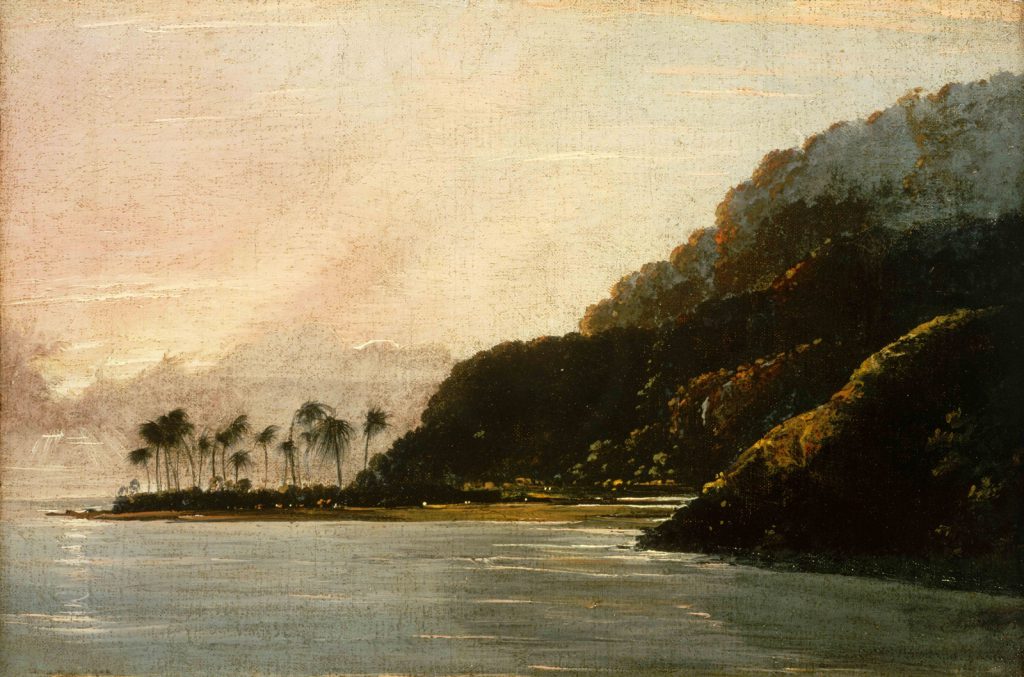
The exhibition Ships, Clocks & Stars: The Quest for Longitude is on show at the National Maritime Museum from 11 July 2014 to 4 January 2015. The exhibition is curated by Richard Dunn and Rebekah Higgitt and is one of the results of a five-year AHRC-funded research partnership between the National Maritime Museum and Cambridge University. For a discussion of the research project see Professor Simon Schaffer’s paper ‘Chronometers, charts, charisma: on histories of longitude’ in this issue.
Tags
Footnotes
Back to text
Back to text
Back to text
Back to text
Back to text
Back to text
Back to text
Back to text


